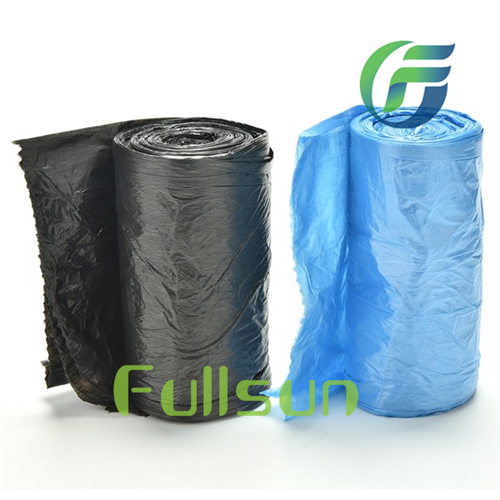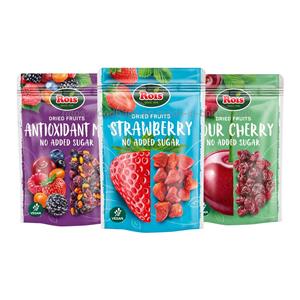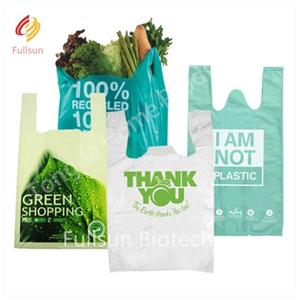Global bioplastics market continues to soar, and bioplastics raw materials are scarce
Global bioplastics market continues to soar, and bioplastics raw materials are scarce

The global bioplastics market size was USD 24.38 billion in 2017 and is expected to reach USD 68.57 billion by 2024. The compound annual growth rate from 2018 to 2024 is 18.8%. The improvement of corporate social responsibility (CSR) and the reduction of dependence on petroleum resources and the progress of research and development have created new opportunities for the industry.Biodegradable trash bags
Non-biodegradable plastics account for the largest proportion According to the type classification, the bioplastics market is divided into biodegradable plastics and non-biodegradable plastics. Non-biodegradable plastics contributed the largest market revenue in 2018, accounting for nearly two-thirds of the total market share, and is expected to continue to dominate by 2024. From 2018 to 2024, the field is expected to grow at the highest compound annual growth rate of 20.2%.Biodegradable garbage bags
Non-biodegradable are divided into epoxy resin, polyurethane, polyethylene terephthalate (PET) and polyamide (PA), polyethylene (PE), ethylene propylene-diene monomer rubber (EPDM), and Polytrimethylene terephthalate (PTT) and the like. The rapid development of the global sustainable packaging industry and the fluctuation of crude oil prices have driven the growth of the Bio-PET market. In addition, biopolyester is expected to meet the growing demand for lightweight materials in the automotive industry. The government's preferential policies will also drive the demand for the biopolyester market as an environmentally friendly alternative.Biodegradable tableware
A new wind is coming, and the global bioplastics market continues to soar. Europe will continue to lead the region. By region, Europe accounts for more than 2/5 of the global market share. It is expected that it will continue to maintain its leading position throughout the forecast period. European policymakers' preferences for bioplastics manufacturers and the increased use of bioplastics by German, Italian and British companies are key factors driving the growth of the region's bioplastics market. The Asia-Pacific region is expected to grow at a compound annual growth rate of 20.4% in the bioplastics market between 2018 and 2024.Biodegradable food bags
The innovative application of bioplastics continues to expand the use of PLA low-temperature softening to make fracture splints. The bioplastic formula developed by the Fraunhofer Institute for Applied Polymer Research (IAP) in Potsdam, Germany, has recently been used to make fixed fractures. Medical splint. This innovative fracture fixation splint, called RECAST, is produced by Nolle Kunststoff technik GmbH, an injection molding company based in Meschede, Germany. In Germany alone, up to 1.5 million fractures need to be fixed each year. In addition, 2-4 times the number of fractures due to infections or sprains may go undocumented. Traditional fracture fixation methods are usually not so comfortable, the splint is heavy, it is easy to emit odor, the application is complicated, and the energy consumption is large. The shape of the fixing splint cannot be changed as the injury recovery process progresses, nor can it be biodegraded. As a result, fracture splints in Germany generate up to 150 tons of trash each year. Biodegradable straws The new concept of RECAST fracture fixation developed by Nolle Kunststoff tecnik company uses various sizes of pre-formed splints made of bio-based and biodegradable PLA for fracture fixation. The plywood is first heated to a temperature between 55 ° C and 65 ° C, and then the temperature of the plywood is minimized. The pre-formed plastic is molded into a splint that fits the corresponding part of the body. This process takes about five minutes. These splints can simply be heated repeatedly to adjust the shape as the treatment progresses. The softening temperature of polylactic acid is 58 ° C. Low temperature softening has limited the application of polylactic acid in some end fields. But as an orthopedic splint, low-temperature softening has the advantage of polylactic acid. This means that products can be rapidly and repeatedly formed by heating. Fraunhofer researchers combined polylactic acid with a suitable filler to develop this splint formulation that meets fracture fixation. In addition, they ensure that the material can be mass produced according to industrial requirements. New air outlets are coming, and the global bioplastics market continues to grow. Lawn mats made from sugarcane bioplastics. ProdTek is a company engaged in the research and development and manufacturing of products for the artificial turf, flower, and textile industries. Recently, ProdTek announced that it will use Braskem's I'm green (TM) polyethylene bioplastics in the cushions of its new Cushion (TM) lawn mats. The bioplastic is made of sugarcane-based polyethylene, has high recycling characteristics, and can reduce carbon emissions of greenhouse gases. It is reported that sugarcane absorbs carbon dioxide and releases oxygen during the growth process. This means that carbon emissions from bioplastics made from sugar cane are negative. From the product life cycle point of view, if the product contains 1 kg of I'm greenTM polyethylene, this is equivalent to reducing carbon emissions by 3.09 kg. ProdTek's new Cushion TM series of mats not only reduce installation time by 25%, but at the end of the life cycle, lawn mats can be recycled 100%. They can be made into plastic pellets for toys and containers.
http://www.fullsunbiotech.com/




